It would be imprudent to not comment on the ghastly phenomenon of climate change, its effect clearly observable bringing along with it a myriad of reasons fueling this inconceivable crisis faced contemporaneously by the entire world at this trying period in time. Climate change is attributed to a change in the usual climate of the
It would be imprudent to not comment on the ghastly phenomenon of climate change, its effect clearly observable bringing along with it a myriad of reasons fueling this inconceivable crisis faced contemporaneously by the entire world at this trying period in time. Climate change is attributed to a change in the usual climate of the planet in relation to temperature, precipitation and wind particularly due to human activities which in turn disturbs the balance of the weather of the earth putting sustainability and our ecosystems at a grave risk.
Pakistan is one of the sixth most populous countries in the world according to the Asian Development Bank Profile. This no doubt has led to many changes in our climate and neither for the better. Climate change was first recorded in 1901 to 2000 and further in 1961 to 2007, however this situation since then has accelerated and aggravated increasingly. There are a number of things that have been affected in Pakistan due to climate change we will be discussing the areas most affected each in turn.
- Glacial Melting
Glacial melting has increasingly become one of the major issues that Pakistan has had to cope with throughout the years. The melting of glaciers has been observed since the past 50 years. R.Jilani’s study on glaciers revealed that when data from 1992 and 2000 was compared there was a decrease of 17km square in the Batura Glacier and the Biafo glacier had also retreated. In 2004 due to the rise of the temperatures there was an upward shift of 400 meters in the frost line according to Jilani. The 2010 super floods are an alarming result of glacier melting which forced 20 million people out of their homes and killed 16000 when the Bindo Gol glacier burst its banks and a further $10 billion in damages was sustained.
Glaciologist Professor Iqbal stated that the pace of the melting of glacier in Pakistan was faster than any other country and that it was a major reason behind the floods. He further remarked that the melting rate of 18000km was unprecedented as it is but a further 20000ft is likely to deplete our water reserves as 50% has already been depleted. In 2011 Pakistan’s representative to the UN in relaying the gravity of the threat of climate change remarked that the rate of glacial recession had gone up by 23% in the last decade. A local speaking to Express Tribune said he had witnessed the glaciers retreat about 6-7 Kms over the past 25 years.
In the years to come the problem was not remedied and caused further damage and the loss of precious lives. In 2013 almost 17000 people died due to floods and the country faced $15 billion damages, according to Dawn News 23% people in Pakistan were at risk of floods and that it is likely the glaciers will melt in the next 2-3 decades. Chitral valley which is at the heart of the Hindu Kush with a population of half a million faced flash floods in 2015 destroying houses and infrastructure, killing 3 and leaving 250,000 stranded, 70% of the water channels destroyed leaving no water for irrigation or drinking and more than half the population cut off from the rest of the country according to deputy Commissioner of Chitral.
In 2018 the melting of glaciers unleashed landslides in Ghizer inundating thousands of homes and displacing hundreds, the collapse of a bridge in Niat Valley killing a woman and child, flood water from Gonaform blocking the karakoram highway, flooding and erosion in Hisper Valley, landslides damaging crops in Daskin valley, people marooned in Gilgit Baltistan and the flow of the Immit river blocking 10 villages. In 2019 the Shishper glacier outburst cause damage to the Karakorum highway and power stations and over 100 houses. In 2020 the plague of the Shishper outburst hit again destroying crops and putting the local’s livelihood at risk in a remote village in Chitral injuring 11 and breaking through the retaining walls. In 2021 yet another flood in Shishper glacial lake in Hunza valley occurred but the damage was minimized due to government preventive measures.
There is need for further preventive measures for glacial floods as the ones put in place have minimized the threat but not eliminated it. Glaciers act as reservoirs, the more they retreat the more water reserves we lose, making it an issue of human as well as economic security. Therefore, there is a fundamental need for the storage of the water from glacial floods and ways to retain it from causing further damage. The Diamer Basha Dam is a promising start towards this goal.
- Air Pollution (smog)
According to the Air Quality index the issue of smog began in 2006 and has since grown worse. By 2015 there was a permanent haze over the city of Lahore during winter and even summer and Lahore was in the list of the top 10 worst cities for smog and one of the most polluted cities in Asia, with high levels of pollution and poor air quality mostly due to emissions from the industrial sector and the abundance of vehicles on the roads.
A study in a medical journal Lancet showed that 22% annual deaths in Pakistan were due to air pollution and further WHO stated that almost 60,000 Pakistanis had died from the high levels of the fine particles in the air which was recorded as one of the world’s largest death tolls from air pollution.
In 2017 Lahore was covered in smog for nearly 2 weeks and the air quality levels revealed a dangerous particulate had reached 1,077 micro grams per cubic meter which was 30 times more than the government considers safe. In 2018 speaking to The Diplomat entrepreneur Abid Omar called the air pollution issue “the invisible killer” as breathing in the particles could cause serious health problems. Karachi and Lahore were considered as some of the most polluted cities as Pakistan was the second most polluted country in the world at the time. Data from Lahore and Peshawar showed AQI above 300 multiple times in November of 2018.
In 2019 the AQI reached 484 on the 30th of October which was seen as hazardous as the threshold is 300. Pakistan Today stated that Punjab province was ranked the most polluted city in the world according to the AQI.
Projects like the 10 billion tree planation in 2018 is a step in the right direction but the ecological problems faced by Pakistan are daunting and there is need for further clean air initiatives. As this is severely affecting environmental and human security.
- Water Scarcity
One of the largest and significant issues faced by Pakistan today is the quandary of water scarcity and is according to IMF the third most affected country in terms of water shortage. 60% of water is derived from monsoon rains and a significant amount from winter rainfall our biggest sources being the glaciers and the river Indus and its tributaries. Pakistan had crossed the water scarcity line in 2005, however Pakistan’s surface ground water resources are depleting rapidly, and by 2016 surface water availability had reached 1000 cubic meters per capita. PCRWR stated that the shortage was due to the alarming rate of usage in Pakistan which was ranked as 4th highest with the water GDP per unit being disconcertingly high.
The only large dams we have are Trabela and Mangla to store floodwater and both reached their dead levels in 2018 as there was not enough water to operate. To the IRSA Pakistan is extremely short on reservoirs explaining that the country receives 145 million acre feet of water but is only able to store 13.7 million, the conundrum being that Pakistan needs 40 million acres but 29 are wasted due to lack of dams. Taking the erratic monsoon seasons and winter season shrinking the UNDP and PCRWR believe Pakistan could face complete water scarcity by 2025 especially if the yearly availability were to decrease to 500 cubic meters per capita.
In Pakistan 80% living in 24 major cities do not have access to clean water moreover in the slums of Karachi 16million do not have running water. Where there is weakness there is exploitation, the operation of water Mafias in the country has not helped the situation whereby they siphon water from the government and sell it to the citizens at a higher price. We have an ever growing population of 220 million and by 2025 the water demand could reach 274 million acre feet and the supply of water could remain at 191 million. 95% of the water is used up by the agricultural sector which leaves us with 60% water loss due to inefficient irrigation systems and poor management.
The factors of climate change are causing faster evaporation of water in the soil leading to even more demand. We are at the 3rd worst taking into account the deaths of 1832 children due to droughts , the drying of rivers, overuse of water, lack of storage facilities , inefficient national water policy , deforestation, poor water supply which in turn can adversely affect our ecosystems and regional biodiversity .
The building of dams although a promising start towards remedying water scarcity, there needs to be further measures to combat the water wastage ratio in the meantime. With the ever growing population there is a pertinent need to minimize these losses as the possibility of a water scant country looms heavy and leads to grave human, economic and food security issues.
- Heat Waves
Among the many grueling climate change issues Pakistan in recent years has had to deal with a frequency of heatwaves in its provinces some more than others. In 2015 a severe heat wave hit the southern part of Pakistan killing almost 2000 from dehydration, with recorded temperatures as high as 49 degrees. On 20 June the heat index reached an alarming 66 degrees due to the reduced wind speed and air pressure with high humidity levels.
The city of Karachi is prone to heat waves due its rapid growth which is making people increasingly vulnerable to heat exposure due to widespread deforestation in order to accommodate ever growing infrastructure in its booming economy. However, despite this Karachi suffers from acute water shortage some surviving on just 10 liters a day, which doesn’t bode well for the already horrid heat, killing 30,000 from water related diseases and the heat killing agricultural animals. Furthermore, widespread electrical failures added to the death toll.
A state of emergency was declared by the Prime Minister and military relief efforts activated. At the peak of June 2015 the number of corpses had exceeded the available storage capacity. Reports surfaced again in 2017 of a heatwave building across Pakistan with temperatures as high as 51 degrees, and lead to the hottest April in the past two decades, on the 5th of May the heat claimed 4 lives in Hyderabad.
Concerning the issues of heatwaves the Federal Minister for Climate Change in 2018, stated that heatwaves were a symptom of climate change, which was continually aggravated by deforestation and rapid urbanization. And climate science has confirmed that this will only get worse. In 2019 the city of Jacobabad reached a scorching 51.1 degrees, this combined with a power outage resulted in the demise of 8 babies in a hospital ICU.
Scientists have estimated a probable increase in temperatures to rise by 3 degrees by the end of the 21st century with the expectancy of three times as many heatwaves. In 2020 a heat wave was announced in Karachi to hit between 17-22 May and people were urged to take this seriously and treat it as a potential catastrophe with the suggestion of a lockdown. Parts of Pakistan witnessed extreme heatwaves with temperatures going above 40 degrees in 2021, Pakistan Meteorological department warned of heat waves likely to hit areas of Punjab, Sindh and Baluchistan, during which there were power cuts for up to 20 hours in some areas. Public Health expert Kiran Rahman revealed that hospitals had seen more heatstroke patients in recent days.
Tackling the extreme heat in the recent years calls for adequate financing of mitigation measures as mega heatwaves are likely to become more frequent affecting productivity and crop loss leading to significant drop in the GDP effecting economic security. Pakistan is heavily dependent on fossil fuels rather than clean energy increasing GHG emissions threatening environmental security. There is a need for early warning systems and the conservation of groundwater for human security.
- Droughts
Pakistan is no stranger to the troublesome calamity of droughts, Punjab Province saw some of the worst droughts in the years 1871, 1899, 1931, 1947, and 1999. One of the most severe droughts occurred between 1991-2000 seeing as Tarbela Dam hits its dead level between February and March every year, agricultural growth has suffered and had great setbacks in 2000-2001 and the droughts have persisted throughout 2001-2002 resulting in a water shortage of up to 50%.
In 2019 provincial governments declared a state of emergency in Sindh and Baluchistan affecting at least 2.8 million. Red Crescent called the droughts one of the worst disasters in Pakistan with increase of malnutrition and disease killing hundreds of children each year. The recent drought like conditions have been prevailing since 2013.
The monitoring systems of droughts have been weak and there is need for policy in relation to water management in the country, most agricultural sectors overuse the water available to them. There needs to be effective implementation of Drought Policies and regional initiatives for drought prevention in order to protect human, economic and food security with the recent precipitation levels not being good enough for drought prone areas.
In conclusion we can see Pakistan deals with a myriad of issues each interlinked due to climate change which effect human security, food security, economic and environmental security making it an issue of national security with the urgent need for better and more efficient remedies.
- The Phenomenon of Climate Change in Pakistan - August 10, 2021

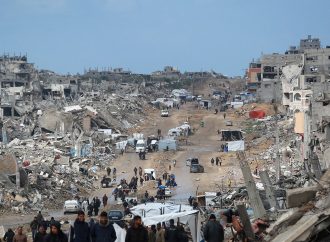


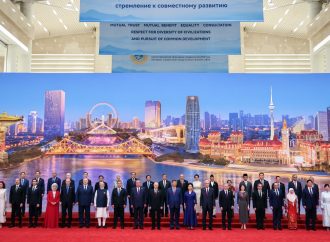
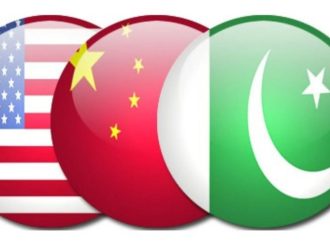
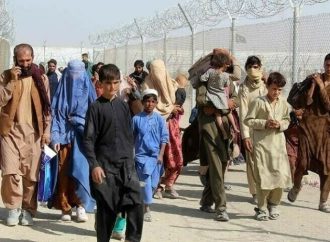

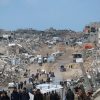


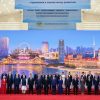

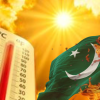







1 Comment
Dr.Parveen Azam Khan
August 13, 2021, 11:07 amDr
REPLY